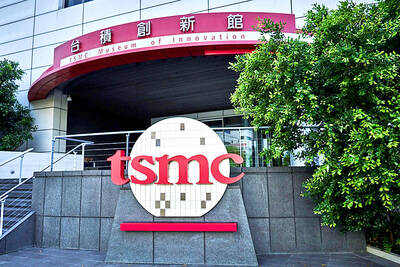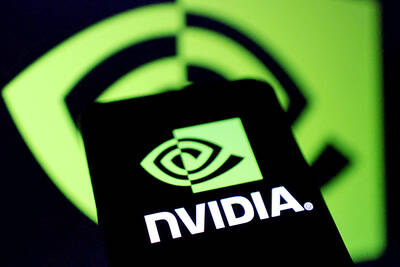Verizon Wireless and Google, two industry Goliaths that have seen each other as potential rivals, are discussing a partnership that would give Google’s search service a prominent spot on the screens of Verizon phones, people briefed on the talks said.
The discussions are being spurred by the growing popularity of sophisticated devices like the iPhone that have simplified Web searching on mobile phones. New phones like those based on Google’s Android software, and models coming from Research in Motion and others, are likely to accelerate the trend.
Any partnership deal between the two is more than a month away, perhaps two, as the talks are in an early phase, said people apprised of the discussions. They are negotiating over how much information Google can retain about Verizon’s customers and their searches, the sources said. The two companies would share revenue from advertising that is tied to searches.
Carriers like Verizon have tried to promote their own branded search services on their phones, but these have not gained traction with consumers.
“There is demand for Google search despite what the carriers put in front of them,” said Roger Entner, a telecommunications analyst at Nielsen IAG, a market research firm. “Consumers want brand names they know.”
The two companies have also discussed a broader partnership that could range from joining forces on public policy issues to featuring content from Google on other Verizon services, including Internet access and FiOS TV. Representatives for the companies declined to comment. The talks were first reported in the Wall Street Journal.
Google and its rivals have been working to secure deals with carriers and handset-makers in hopes of gaining a foothold in a market that is small, but growing fast. Of the 36 million Verizon Wireless customers who access data using their phones, about 13.1 million search the Web, say estimates from Nielsen Mobile, which tracks wireless trends. (Verizon has 68.7 million customers overall.)
About 3.8 million of Verizon’s customers use the network to access a search engine like Google or Yahoo, Nielsen said. Significantly fewer customers — 2.3 million — use the most prominent search tool on Verizon’s phones, which bears its own brand.
“That battle may be lost,” said Rajeev Chand, an analyst at Rutberg & Co.
Some carriers have resisted working with search engine companies because they fear those companies will take a large portion of the revenue that is expected to come from mobile advertising. And as the race among carriers has become more competitive, they are also wary about giving information about their customers to new business partners who could later become foes.
Also See: Has Google turned from cool into corporate Death Star? Part 2

SEEKING CLARITY: Washington should not adopt measures that create uncertainties for ‘existing semiconductor investments,’ TSMC said referring to its US$165 billion in the US Taiwan Semiconductor Manufacturing Co (TSMC, 台積電) told the US that any future tariffs on Taiwanese semiconductors could reduce demand for chips and derail its pledge to increase its investment in Arizona. “New import restrictions could jeopardize current US leadership in the competitive technology industry and create uncertainties for many committed semiconductor capital projects in the US, including TSMC Arizona’s significant investment plan in Phoenix,” the chipmaker wrote in a letter to the US Department of Commerce. TSMC issued the warning in response to a solicitation for comments by the department on a possible tariff on semiconductor imports by US President Donald Trump’s

The government has launched a three-pronged strategy to attract local and international talent, aiming to position Taiwan as a new global hub following Nvidia Corp’s announcement that it has chosen Taipei as the site of its Taiwan headquarters. Nvidia cofounder and CEO Jensen Huang (黃仁勳) on Monday last week announced during his keynote speech at the Computex trade show in Taipei that the Nvidia Constellation, the company’s planned Taiwan headquarters, would be located in the Beitou-Shilin Technology Park (北投士林科技園區) in Taipei. Huang’s decision to establish a base in Taiwan is “primarily due to Taiwan’s talent pool and its strength in the semiconductor

An earnings report from semiconductor giant and artificial intelligence (AI) bellwether Nvidia Corp takes center stage for Wall Street this week, as stocks hit a speed bump of worries over US federal deficits driving up Treasury yields. US equities pulled back last week after a torrid rally, as investors turned their attention to tax and spending legislation poised to swell the US government’s US$36 trillion in debt. Long-dated US Treasury yields rose amid the fiscal worries, with the 30-year yield topping 5 percent and hitting its highest level since late 2023. Stocks were dealt another blow on Friday when US President Donald

UNCERTAINTY: Investors remain worried that trade negotiations with Washington could go poorly, given Trump’s inconsistency on tariffs in his second term, experts said The consumer confidence index this month fell for a ninth consecutive month to its lowest level in 13 months, as global trade uncertainties and tariff risks cloud Taiwan’s economic outlook, a survey released yesterday by National Central University found. The biggest decline came from the timing for stock investments, which plunged 11.82 points to 26.82, underscoring bleak investor confidence, it said. “Although the TAIEX reclaimed the 21,000-point mark after the US and China agreed to bury the hatchet for 90 days, investors remain worried that the situation would turn sour later,” said Dachrahn Wu (吳大任), director of the university’s Research Center for